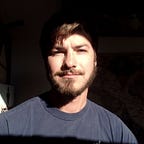How to Build a Hylomorphic Body
Modern men can learn from the past
In The Abolition of Man, C.S. Lewis opens with a meditation on a central paradox of the modern age. This is an era which lionizes the courageous, the creative, and the driven, yet seeks to strip men of all positive values through a faux intellectualism. Our schools breed cynicism in the guise of critical thinking and the result, Lewis says, is “men without chests,” that is, men who lack the feeling capacity that inspires every heroic act and every passionate pursuit.
Today there are droves of young men seeking meaning from obscure philosophical exhortations, and rediscovering the vital physical qualities of manliness that makes ancient epics glimmer. Although far from a monolithic movement, “sun and steel” are the most common denominators — the chosen instruments for strengthening ones’ resolve against the onslaught of deconstruction, deracination, and demoralization.
There is something noble in the Bronze Age idols used as Twitter avatars to cultivate an battle-hardened aesthetic. The proliferation of gurus and knock offs, however, leave something wanting — namely, the authentic feeling of transcendence that motivated past ages of conquest and exploration to go beyond the limitations of their time and place.
The statuesque physiques on display in museums of ancient culture were carved not primarily in gymnasia or at the beach. Rather they were forged in the course of missions that expanded the frontiers of human knowledge and civilization, sometimes creating literally new worlds out of the state of nature.
Without purposeful action, civilization will always slouch towards Gomorrah. A literal slouching posture has come to characterize modern man. A service economy and smart phones have accelerated the epigenetic shift towards “text neck” — a vertebral spike between the shoulders and cranium, signaling the greatest devolution since hunter-gatherers traded their spears and fishing rods for backbreaking plough shares.
Even in Lewis’s time, the bodybuilding subculture preserved what was otherwise becoming an endangered species: men with literal barrel-chests — not the exaggerated form seen in men trying too hard to impress a woman, but the proud and upright stance of a strong man, with muscles in proportion to the demands of physical labor.
Over time, only the extremes of body types would remain. A small number of bodybuilders have achieved a functionally useless hypertrophy while the mass of men have atrophied to the point of being unable to stand erect for any length of time.
Today’s sun-and-steel gurus spend a few hours in the gym to get the minimum effective dose for maximum gains, but the results appear somehow lopsided — uneven, lumpy and out of proportion — compared to their ancient Greek role models.
What is lacking is a hylomorphic framework — the merging of form (hulê) and matter (morphê). The ideal shape cannot be attained through cheap imitation, but rather constant sculpting from the inside out. As a man begins to move naturally with greater confidence in the process of doing difficult physical activities, he steadily builds the spinal and abdominal bracing necessary to maintain Michalengelo’s Davidic poise. The shepherd-turned-King of Israel achieved his physical stature trekking through mountains. The real King David likely learned to lift heavy loads (the proverbial lost sheep?) overhead efficiently to minimize the wear-and-tear on his back.
Esther Gokhale, who studied posture in hardy, primitive populations, has found them all to possess a particularly strong transverse abdominus — the hidden abs beneath the superficial six-pack that acts as an inner corset to support the upper carriage.
Observing the Twitter trend of posting pictures of one’s physique to signal credibility on subjects ranging from diet and fitness to continental philosophy, you see the same slouching posture over and over again. This conveniently contracts the pecs and abs, accentuating their hypertrophy, but cements a submissive posture that symbolizes a polite decline to the universe’s grandest summons in favor of cheap praise from fellow physique-posters.
A better ideal would capture the body in action, or at least in the steady poise of a warrior who need not flex to reveal his inner and outer strength.
Sun and steel can easily be incorporated into a positive values system, along the lines of Georges Heberts “natural method.” Hébert’s military training and experience rescuing civilians during a 1908 volcanic eruption on Martinique led him to develop his method with three distinct strengths in mind:
- The physical, of course, is necessary to get the work done.
- The moral must guide physical strength towards its most noble and altruistic ends.
- And lastly, the virile, or vital, must remain alive to the possible — animating both physical and moral strength to transcend the stifling and intellectualizing tendencies of the age.
All three must be brought to bear before body building is complete. All three are essential for men looking to regain their chests.
